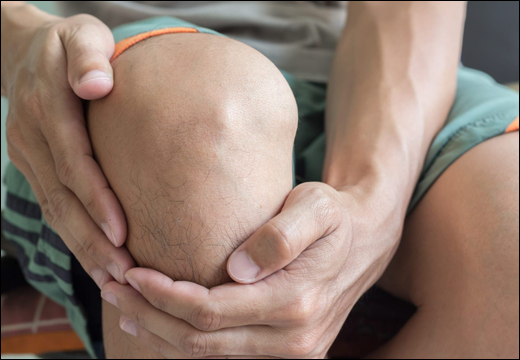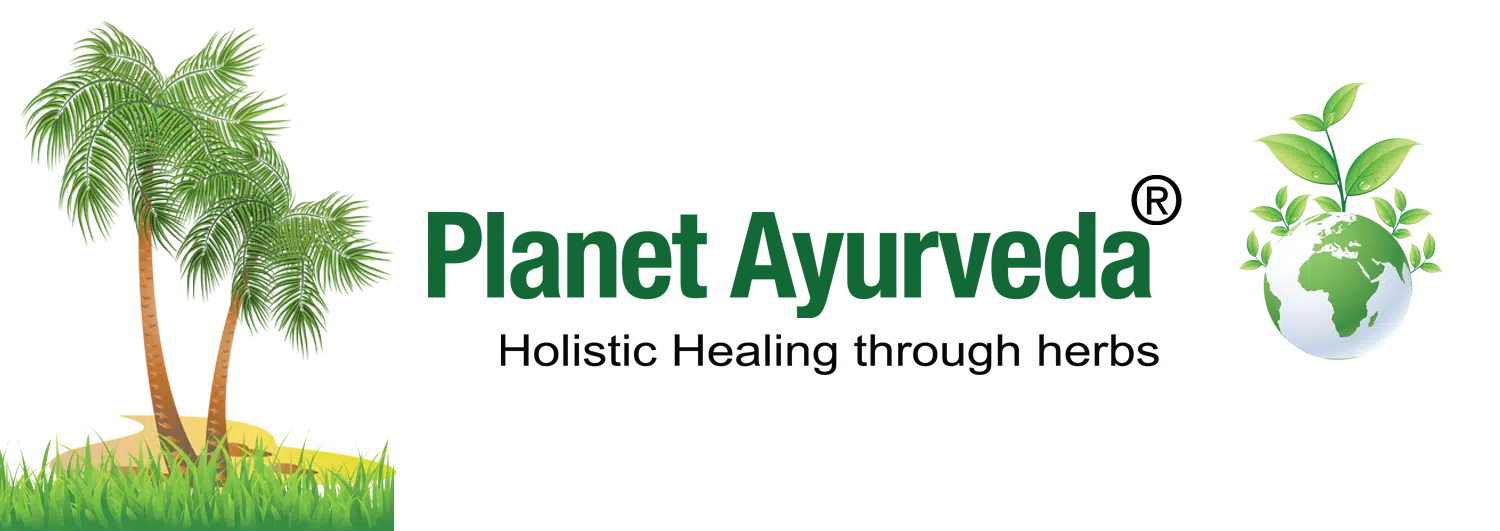Herbal Remedies for Pigmented Villonodular Synovitis – Types, Causes, Symptoms, Ayurvedic Treatment & More
Abstract
The synovium, or synovial membrane, is a specialized connective tissue lining the inner surfaces of synovial joints, tendon sheaths, and bursae. It plays a vital role in joint function by producing synovial fluid, which lubricates joints, absorbs shocks, and nourishes the articular cartilage. When synovial health is compromised due to inflammation, injury, or degenerative conditions, it can result in joint pain, swelling, stiffness, and limited mobility, as observed in disorders such as arthritis and Pigmented Villonodular Synovitis (PVNS).

Introduction
Joint problems, also known as arthropathies, encompass a variety of disorders that impact the joints, causing pain, stiffness, swelling, and limited mobility. Pigmented Villonodular Synovitis (PVNS) is an uncommon, non-cancerous yet locally aggressive condition involving excessive growth of the synovial lining of joints, tendon sheaths, or bursae. It is also known as Giant Cell Tumor of the Tendon Sheath (GCT-TS) and Tenosynovial Giant Cell Tumor (TGCT). It is marked by the accumulation of hemosiderin (iron storing complex) within the synovial tissue, which results in joint swelling, discomfort, stiffness, and, if untreated, may lead to gradual joint damage. Hemosiderin gives the synovial tissue its characteristic brownish joint discoloration. PVNS primarily involves the knee, with the hip being the next most commonly affected joint.
Pigmented Villonodular Synovitis (PVNS) primarily occurs in young adults between 20 and 50 years of age, but it can develop at any age, including rare instances in children as young as one year old. It affects both males and females equally. PVNS can greatly reduce a person’s quality of life by producing pain, swelling, stiffness, and restricted joint movement, which hinder everyday activities and work. The disorder is progressive and, if left untreated, may result in severe joint deformities, bone damage, and secondary arthritis. Even treatment options, such as surgery, can involve complications and extended recovery periods, further affecting overall well-being.
Types
PVNS is of Two Types-
1. Localised/Nodular PVNS
It affects a small, clearly defined portion of the synovial membrane. It generally appears as a single nodule or mass within a joint or along a tendon sheath. While it more commonly involves smaller joints such as the fingers and wrist, it can occasionally occur in larger joints as well.
2. Diffuse PVNS
It involves widespread overgrowth of the synovium, mainly affecting large joints like the knee and hip. It is more aggressive than the localized form, has a higher recurrence risk, and can lead to joint damage, bone erosion, and impaired function if untreated.
Causes
PVNS seems to result from a mix of genetic, mechanical, and inflammatory factors, although its exact cause is still unclear. Let’s discuss about some factors involved in its origin-
- Genetic/Neoplastic: Overexpression of the CSF1 gene may cause abnormal synovial cell growth.
- Trauma: Repeated joint injuries can trigger excessive synovial proliferation.
- Inflammation: Chronic synovial inflammation promotes tissue overgrowth and hemosiderin buildup.
- Idiopathic: Many cases arise without a clear cause.
Symptoms
Symptoms seen in Localised PVNS-
- Pain in the affected joint.
- Swelling around the affected joint.
- Joint locking or catching.
- Sense of joint instability.
Symptoms seen in Diffuse PVNS-
- Gradual onset of joint pain, swelling, and stiffness.
- Limited range of motion.
- Occurrence of blood accumulation in the joint.
- Skin around the joint may appear red.
Signs
- Hemarthrosis- Blood accumulation in the joint.
- Palpable Mass- a soft tissue mass can be felt in nodular PVNS.
- Joint Effusion- Collection of fluid around the joint.
- Erythema and inflammation.
Diagnosis
- Medical History- Trauma to the region may be linked with it.
- Physical examination- Assessing symptoms, noticing the gait of the patient.
- X-ray- Normally appears to be normal in early stages. May show edema or bone erosion in later stages. Subchondral cysts are often found as well.
- MRI- Joint effusion, synovial lining thickening may be seen. The presence of Hemosiderin can be found.
- Joint aspiration and Biopsy- Usually brown, cloudy, or bloody synovial fluid is seen. On further analysis, microscopy shows multinucleated giant cells, hemosiderin-laden macrophages, and proliferating synovial tissue.
Treatment
- NSAIDs- Ibuprofen, Diclofenac.
- CSF1R inhibitors- Pexidartinib (In aggressive or recurrent PVNS).
- Surgical Treatment- Surgery is the last resort but does not guarantee that there will be no recurrence.
- Arthroscopy- For localized or early diffuse PVNS.
- Open Surgery- When PVNS involves the entire knee (front and back).
- Combined Arthroscopic and Open Surgery- If the growth is mainly behind the knee.
- Total Joint Replacement- In late-stage PVNS with severe joint destruction.
- Radiation therapy- Used in cases of extensive diffuse PVNS, as it helps reduce tumor size and control its spread.
- Physiotherapy- After surgical intervention, it is required to regain strength, flexibility and mobility.
Ayurvedic Overview
Ayurveda says that the Vata element is responsible for any kind of pain in the body. And presence of pain is one of the major symptoms in this scenario. So, Vata along with Kapha dosha are the main culprits in PVNS. It is a Sandhi Roga (Joint disorder). Since, there is major involvement of the knee joint in this disease, we can also correlate it with Kroshtuksheersha (Sinoarthritis of the knee joint) in Ayurveda. Overall, it is a Vata predominant disorder affecting joints (primarily knee). What happens is, if a person have been overindulging in Ruksha (Dry), Laghu (Light), Unfulfilling, Visham ahara (irregular, incompatible, or unwholesome diet) diet, have been suppressing Vegas (Natural urges like micturition), carrying emotions like Krodha (Anger), Shok (Sadness), Bhaya (Fear) etc, and have had an incident of Abhigata (Physical Trauma), Vata dosha aggravates. And this aggravated dosha, imbalances Kapha as well and then together both these moves in the body and finds Ashraya (Residence) in joints and surrounding structures. The patient experiences Sandhishoth (Joint swelling), Sandhishoola (Joint pain), Daha (Burning sensation around the joint).
If we go deeper into Kroshtuksheersha (Sinoarthritis of the knee joint), we find that Vata and Rakta (Blood tissue) are vitiated and it only and only involves the Janu sandhi (Knee joint), sparing all other Sandhi (Joints) of our body. This shloka below explains Kroshtuksheersha:
वातशोणितजः शोफो जानुमध्ये महारुजः ।।
शिरः क्रोष्टकपूर्वं तु स्थूलः क्रोष्टकमूर्धवत् ।।
It says that vitiated Vata and Rakta cause a large swelling in the middle of the knee joint, resembling the Shira of Shringala (Head of a jackal). Treatment in Ayurveda involves Abhyanga (Therapeutic massage) with Til Taila, Swedana (Hot fomentation) using herbal decoctions. Herbs like Guggul (Commiphora mukul), Shunthi (Zingiber officinale), Haridra (Curcuma longa) and Shallaki (Boswellia serrata) are useful in PVNS. Classical formulations like Sinhnaad Guggul, Yograj Guggul, Brihat Vata Chintamani Ras helps combat Vata predominant disorders. Panchakarma therapies like Janu Basti (Knee Joint Oil Reservoir Therapy) are extremely helpful and act quickly in relieving pain and swelling in patients. It is specifically designed for knee joint ailments. In this therapy, warm herbal oils or medicated ghee are held over the knee using a dough ring for a set period. It helps reduce pain, swelling, and stiffness, while nourishing the joint tissues and balancing Vata Dosha. Regular practice enhances knee mobility, strengthens surrounding muscles, and supports overall joint health.
Dietary Habits and Lifestyle Modifications
Dietary Habits
- A low caloric diet consisting of about 2000 calories with a minimum carbohydrate content is advisable. Cabbage, carrot, celery, cucumber, lettuce, onion, radish, asparagus, beets, cauliflower, spinach, beans and turnips can be added to the diet. Raw potato juice is extremely beneficial.
- Avoid excessive salt intake, aerated waters, all cheese except cottage cheese, tea and coffee.
Lifestyle Modifications
- Light exercises such as walking should be done. Do not overdo physical activities involving knee joints. Maintain a normal body weight. Pranayama (Breathing exercises) like Anulom-Vilom (Alternate nostril breathing) should be practised. Yogasanas like Tadasana (Mountain Pose), Shavasana (Corpse Pose), Setu Bandhasana (Bridge Pose) can be done as per strength.
Herbal Remedies For Pigmented Villonodular Synovitis By Planet Ayurveda
Planet Ayurveda is a trusted name in the world of herbal and Ayurvedic wellness, blending centuries-old wisdom with modern quality standards. With a mission to promote natural healing, it is designed to restore balance and vitality in the body. Each product is carefully crafted using classical Ayurvedic formulations, potent herbs, and authentic manufacturing practices. We have the following medicines for PVNS-
- Kanchnaar Guggul
- Crab Curcumin 95%
- Dashmoola Capsules
- Crab Artemesinin Capsules
- Joint Aid Plus
- Sinhnaad Guggul
Product Description
1. Kanchnaar Guggul
These tablets are made from key ingredients like Kanchnaar (Bauhinia variegata), Guggul (Commiphora mukul), Amalki (Emblica officinalis) etc. These herbs cumulatively work to balance all three doshas (Vata, Pitta and Kapha) and active ingredients like alkaloids, tannins, gallic acid etc, present in these help in reducing nodule formation in PVNS. They also reduce oxidative stress in synovial tissue, preventing further joint damage.
Dosage– 2 tablets twice daily.
2. Crab Curcumin 95%
These capsules are made of Haridra (Curcuma longa) and Marich (Piper nigrum). These herbs reduce Vata and Kapha doshas and Ama (metabolic endotoxins) in the body. Curcuminoids, piperine present in this, acts as Shothara (anti-inflammatory), anti-oxidants, thus helping in reducing swelling, pain and promoting healthy joint tissue regeneration. Marich also enhances the absorption and effectiveness of co-administered herbs like Haridra.
Dosage– 1 capsule twice a day.
3. Dashmoola Capsules
These capsules are made from Mula (roots) of 10 potent herbs like Bilwa (Aegle marmelos), Shyonak (Oroxylum indicum), Patla (Stereospermum suaveolens) etc. Dashmoola pacifies Vata and Kapha doshas. It acts as a core anti-inflammatory and joint-supporting formulation in PVNS, addressing pain, swelling and nodular proliferation while promoting healthy tissue regeneration.
Dosage– 1 capsule twice daily.
4. Crab Artemesinin Capsules
These capsules are made from Davna (Artemisia vulgaris) and Maricha (Piper nigrum). These herbs pacify Vata and Kapha doshas. Active constituents like sesquiterpenoid lactones (like vulgarin), flavonoids, alkaloid piperine, and volatile compounds improve microcirculation in joints, reducing edema and stiffness. They also limit nodular proliferation of synovial tissue.
Dosage– 1 capsule twice daily.
5. Joint Aid Plus
These capsules are made from potent herbs with key ingredients like Nirgundi (Vitex negundo), Guggul (Commiphora mukul), Shallaki (Boswellia serrata). They balance Vata and Kapha doshas, while slightly increasing the Pitta element. Flavonoids, iridoids, volatile oils, guggulsterones and boswellic acids present in these herbs work against inflammation, protect cartilage, improve mobility and also alleviate pain.
Dosage– 1 capsule twice daily.
6. Sinhnaad Guggul
These tablets contain key ingredients like Guggul (Commiphora mukul), Gandhak (Purified sulphur), and Triphala (Amalki, Bibhitaki and Haritaki). It is a classical Ayurvedic formulation that balances Vata and Kapha doshas and consists of valuable phytochemicals such as tannin, alkaloid, flavonoids, phenols, saponins, sterols etc. They are antioxidant, anti-inflammatory, rejuvenator, analgesic in action and also supports synovial health and joint lubrication.
Dosage– 2 tablets twice daily.
To buy these Products, please visit store.planetayurveda.com
Conclusion
Pigmented Villonodular Synovitis (PVNS) is a rare, locally aggressive joint disorder that primarily affects the knee, causing pain, swelling, stiffness, and potential joint damage if left untreated. Modern management includes surgical interventions, radiation therapy, and physiotherapy, while Ayurvedic principles emphasize pacifying Vata and Kapha doshas through herbal medicines, Panchakarma therapies like Janu Basti, therapeutic massage, and Swedana. Supporting treatments, including Vata-balancing herbs like Guggul, Shunthi, Haridra, and Shallaki, along with classical formulations such as Sinhnaad Guggul and Yograj Guggul, help reduce inflammation and joint discomfort. Dietary and lifestyle modifications, proper hydration, and mild physical exercises or Yogasanas- further enhance joint health and mobility. An integrated approach combining Ayurvedic therapies, supportive diet, and modern interventions can effectively manage PVNS, reduce symptoms, and improve overall quality of life. You should consult an Ayurvedic doctor if you experience symptoms like these and get the right kind of help to live a healthy life.
Frequently Asked Questions (FAQ’s)
Q1. What is the survival rate for PVNS?
At two years, the recurrence-free survival rate was 83.8%, which declined to 71.3% at five years and 61.7% at ten years. Subgroup analysis showed two-year recurrence-free survival of 63.6% in PVNS patients, 86.7% in RA cases, and 100% in those with peripheral spondyloarthritis.
Q2. What is the recovery time for PVNS surgery?
Recovery after PVNS synovectomy depends on the approach—arthroscopy usually heals within weeks, while open surgery may take months. Physiotherapy is essential for restoring strength and mobility.
Q3. Is PVNS a disability?
Recurrence after PVNS surgery ranges between 8–56%, and despite being benign, diffuse PVNS can lead to significant disability in younger patients.
Q4. Is PVNS a sarcoma?
No, it is not a sarcoma. Multifocal PVNS can be distinguished from sarcoma, while hemangiomas and synovial osteochondromatosis show distinct features; intra-articular sarcomas are extremely rare.
Q5. Is PVNS an autoimmune disease?
Pigmented villonodular synovitis is a rare condition of uncertain cause, most commonly involving the knee and foot, with no established link to autoimmune disorders.
Q6. How rare is PVNS?
It is not a very common disease. The occurrence of PVNS is estimated at about 1.8 to 8 cases per million individuals.
Q7. What can PVNS be mistaken for?
Extra-articular PVNS often mimics tendinitis or bursitis, causing delayed or missed diagnosis, and is managed by arthroscopic, mini-open, or open synovectomy.




